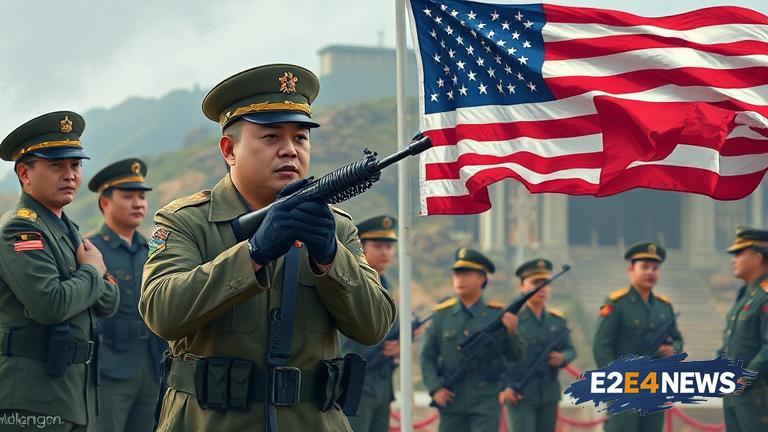The joint military drills, code-named ‘Freedom Shield’, are an annual exercise aimed at enhancing the readiness and cooperation between the two nations’ militaries. The exercises, which started on March 13, will run for 11 days and involve a range of activities, including amphibious landings, aerial combat drills, and naval maneuvers. The drills are taking place amid heightened tensions on the Korean Peninsula, with North Korea having conducted a series of missile tests in recent weeks. The North Korean government has warned that the joint exercises could lead to a nuclear response, with the country’s state media describing the drills as a ‘reckless’ and ‘dangerous’ provocation. Despite the warnings, South Korea and the US have pressed ahead with the exercises, which they say are essential for maintaining regional stability and deterring North Korean aggression. The drills involve thousands of troops from both countries, as well as a range of military hardware, including F-35 fighter jets, destroyers, and submarines. The exercises are being held at a time of heightened tensions between the US and North Korea, with the two countries at odds over issues such as denuclearization and economic sanctions. The US has imposed a range of sanctions on North Korea in response to its nuclear and missile programs, which have been condemned by the international community. North Korea has responded to the sanctions by vowing to continue developing its nuclear capabilities, which it says are necessary for its self-defense. The joint military drills have been criticized by some as a provocative move that could escalate tensions on the Korean Peninsula. However, others argue that the exercises are necessary to demonstrate the strength and resolve of the US-South Korea alliance, and to deter North Korean aggression. The exercises are also seen as an opportunity for the two countries to enhance their military cooperation and interoperability, which is essential for responding to potential security threats in the region. The US has a long-standing commitment to defend South Korea, which is enshrined in a mutual defense treaty between the two countries. The treaty obliges the US to come to the defense of South Korea in the event of an attack, and the joint military drills are seen as an important part of this commitment. The exercises have been welcomed by the South Korean government, which sees them as a vital part of its national security strategy. The government has also emphasized the importance of the US-South Korea alliance, which it says is essential for maintaining regional stability and security. The joint military drills have also been supported by other countries in the region, including Japan, which has expressed concerns about North Korea’s nuclear and missile programs. The exercises are expected to continue until March 23, and will involve a range of activities, including a large-scale amphibious landing exercise. The exercise will involve thousands of troops, as well as a range of military hardware, including tanks, artillery, and naval vessels. The drills will also involve a range of special operations forces, including US Navy SEALs and South Korean special forces. The exercises are being closely monitored by the international community, which is watching with interest to see how North Korea responds to the joint military drills. The US and South Korea have made it clear that they will not be intimidated by North Korean threats, and will continue to take all necessary measures to defend their interests and maintain regional stability. The joint military drills are seen as an important part of this effort, and are expected to play a key role in shaping the security landscape of the Korean Peninsula in the months and years to come.
